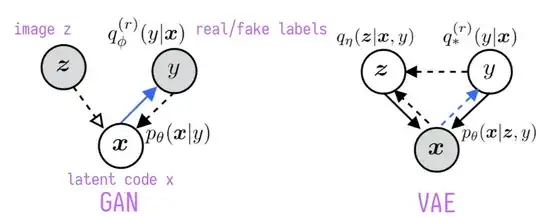This question is in a way duplicating this question, but I'm not happy with the final answer and feel like I need a deeper dive.
Assume that $X_j \sim \Gamma(\alpha_j,\beta_j)$, where $\alpha, \beta$ denotes shape and rate.
I'm interested in deriving the form of $GG(\gamma, \alpha, \beta)$ of the following sum, where $\gamma$ is the form/power parameter:
$$S = \sum_{j = 1}^{d} X_j^2$$
From the previous answer I understand, that $Y_j=X_j^2$ has a Generalized Gamma distribution with $\gamma = 1/2$. It follows, that $\sum_{j=1}^{d} Y_j^{1/2}$ has gamma distribution, therefore $S$ is also Generalized Gamma variable.
However, how would the final parameters of the distribution look like?
Assuming $\beta_j = \beta, \forall j$, it is known that $Z = \sum_{j=1}^{d} Y_j^{1/2} \sim \Gamma(\sum \alpha_j, \beta)$. Knowing $Z$, how should we proceed in deriving the form of $S$? The previous answer claims that it is straightforward from there as if it's $GG(\gamma, \sum \alpha_j, \beta)$, which doesn't feel true since $S^{1/2} \neq Z$.
